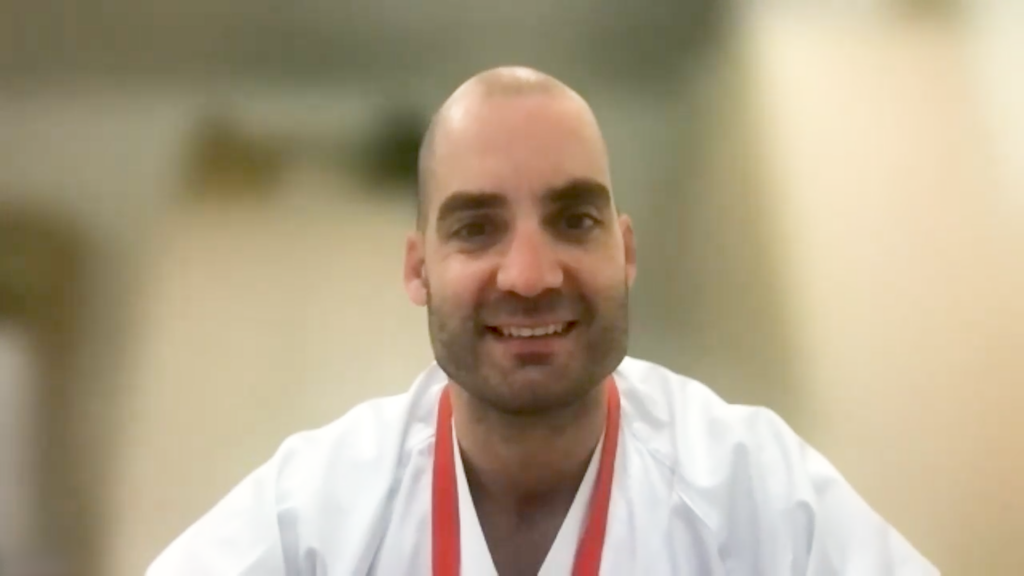touchCARDIO coverage of data presented at ESC 2024
touchCARDIO spoke with Dr Guillaume Marquis Gravel, Assistant Professor of Clinics, Université de Montréal, Montréal, Canada about their analysis of the results of REVIVED-BCIS2 (ClinicalTrials.gov identifier: NCT01920048) and STICH (ClinicalTrials.gov identifier: NCT00023595).
Revascularization for patients with ischaemic left ventricular (LV) systolic dysfunction takes one of two forms – percutaneous coronary intervention (PCI) and coronary artery bypass graft (CABG), both of which have positives and negatives. STICH, published in 2011, analysed the role of CABG in patients with LV systolic dysfunction and looked at improvement of clinical outcomes in 1,212 patients from 22 countries across the world, optimised to either optimal medical therapy or optimal medical therapy plus CABG. REVIVED-BCIS2 in 2022 looked at 700 patients in the UK with a similar patient population of 35% ejection fraction or less, randomized to PCI or optimal medical therapy. This interview dives into their analysis of the results from these exciting trials and investigation into the discrepancies between the outcomes.
Disclosures: Guillaume Marquis-Gravel has been a consultant for HLS Therapeutics, Novo Nordisk and Novartis, received grant/research support from Novartis, and has participated in speaker’s bureau for JAMP Pharma and Novartis.
This content has been developed independently by Touch Medical Media for touchCARDIO and is not affiliated with ESC. Unapproved products or unapproved uses of approved products may be discussed by the faculty; these situations may reflect the approval status in one or more jurisdictions. No endorsement of unapproved products or unapproved uses is either made or implied by mention of these products or uses by Touch Medical Media or any sponsor. Views expressed are the speaker’s own and do not necessarily reflect the views of Touch Medical Media.
Click here for more content on interventional cardiology and for further ESC 2024 highlights visit here.
Transcript
Introduction
Hi, I’m Dr Guillaume Marquis-Gravel. I’m an interventional cardiologist from the Montreal Heart Institute, which is affiliated with the University of Montreal.
Q1. What are the challenges in the treatment of ischaemic left ventricular systolic dysfunction?
So, yeah, so the current challenges in the treatment of ischaemic left ventricular systolic dysfunction are numerous.
In 2024, there are three pillars of treatment for these patients. The first pillar is medical therapy. So there has been a lot of advances, tremendous advances in medical therapy in the past few years, past few decades even, the development of new drugs that really improved clinical outcomes of these patients.
The second pillar is the device. So device therapy, including CRT, ICDs, and so on.
And the third pillar is revascularization, the one I’m interested in. So for revascularization for these patients, there are two options of revascularization modality – there’s PCI and there’s CABG.
Both have their pros and their cons.
CABG, obviously, CABG is a surgery, so it’s a little bit more invasive. Patients need a sternotomy, there’s some recovery involved in that.
PCI, obviously, it’s less invasive. We go either transradial or transfemoral approach, but there’s a little bit less of data that you should have in improved outcomes. And actually, there’s only two randomized trials that looked at revascularization in patients with heart failure with LV systolic dysfunction, the REVIVED-BCIS2 trial that looked at PCI, and the STICH trial that looked at the role of CABG in that context.
Q2. What were the aims, methods and results of the REVIVED-BCIS2 and STICH trials?
So I started with the STICH trial, which was the first one to be published. It was back in in 2011, in the New England Journal of Medicine. So, really, that was the first large scale powered or randomized trial to evaluate the role of CABG in patients with LV systolic dysfunction in terms of clinical outcomes improvement.
So this was a large trial, 1,200, 1,212 patients from around the world, 22 countries involved. Patients needed to have an EF of 35% or less. Most of the patients had extensive multivessel coronary disease.
And participants were randomized to either optimal medical therapy alone or to CABG plus optimal medical therapy.
So the primary endpoint was all-cause mortality. Patients were followed for 56 months, and at 56 months, all-cause mortality was numerically lower with CABG compared to optimal medical therapy alone. So at 36% compared to 41%, but it was not statistically significant. However, the secondary endpoints of cardiovascular mortality or the composite of all-cause death or heart failure hospitalization were significantly reproduced with CABG.
However, there was a long-term extended study of the STICH trials, it was called the STICHES study. It took patients from STICH and followed them up to 9.8 years. And then on the long term, CABG was associated with a significant reduction in all-cause mortality compared to optimal medical therapy. So it’s really since the STICH trial was published that CABG is now the standard of care in patients with heart failure, it’s a class one recommendation in clinical practice guidelines.
The REVIVED-BCI2 trial was published more recently in 2022 in the New England Journal of Medicine. It was a very large scale trial, again, 700 patients, all in the UK and a similar patient population, so 35% ejection fraction or less. All patients had extensive multivessel disease. Viability was demonstrated as well in all of the patients, and they were randomized to either PCI or optimal medical therapy.
However, this time, the trial was neutral. So all-cause mortality was exactly the same between both trials over immediate follow-up of 41 months. There was no significant difference. There was no significant difference either in the changes in LVEF.
Quality of life improved a little bit at 1 year with PCI, but it was not sustained, up to up to 2 years. So, really, the PCI was not associated with an improvement in in clinical outcomes whatsoever in the REVIVED-BCIS2 trial.
Q3. What were the aims and methods of your analysis?
So in our analysis, we wanted to dig into a little bit more why the results of the STICH and REVIVED seem to be discrepant. So why in STICH, revascularization with CABG improved clinical outcomes, and why in REVIVED-BCIS2, revascularization with PCI did not improve clinical outcomes. So we wanted to try to understand that a little bit more, and we dug into that.
One of the reasons that that may be an explanation for this discrepancy is that patient populations may not have been comparable, notably in terms of baseline surgical risk.
So the question and the aim of our study was to evaluate whether baseline surgical risk was an effect modifier on the treatment effect of revascularization with PCI or CABG, and unclinical outcomes in this vulnerable population of patients with heart failure with decreased LV function.
Q4. What were the findings?
So our findings were, first the first interesting finding, maybe not surprising, but quite interesting, is that baseline characteristics of the patients in both trials were not were not similar in many aspects. So for age, for example, patients in REVIVED were much older than patients in STICH. On the average, 69 years versus 60 years.
Baseline surgical risk was also very different between both trials. Actually, baseline surgical risk was significantly higher in REVIVED compared to the STICH trial, in terms of EuroScore 2. So we use the EuroScore 2 score to define the baseline surgical risk.
One of the reasons why that be why is there a discrepancy baseline surgical risk that we think, is that patients who were eligible for CABG were lower were lower risk for CABG, were likely sent for CABG in a routine clinical practice, and those who were refused for CABG may have been more than inclined to be approached for a REVIVED 2 trial. So this was one of the findings of our study. But the main finding of our study was to look at the interaction between baseline surgical risk and the treatment effect of PCI or CABG and all-cause mortality.
So when we looked at, CABG in STICH, there was no significant interaction between baseline surgical risk in and a treatment effect of CABG, which means that, in other words, CABG seemed to reduce all-cause mortality regardless of baseline surgical risk. So this was very, interesting to see. This was true when baseline surgical risk in by EuroScore 2 was modelled either as two tags or as a continuous variable.
In the REVIVED-BCIS2 trial, we did the same thing, the same approach, the same analysis, and we showed that PCI was not associated with a significant production in all-cause mortality regardless of baseline surgical risk. So, again, it was no interaction, which means that in other words, PCI does not improve outcomes regardless of baseline surgical risk. And again, it was true, when baseline surgical risk by EuroScore 2 was modelled as a continuous variable or at third times.
Q5. How do you think these findings might impact clinical practice?
Yeah. So for now, these findings, the way they will impact clinical practice is that CABG should remain, until we have more data from other trials, should remain the standard of care in patients with LV systolic dysfunction, regardless of baseline surgical risk. Obviously, it doesn’t apply when patients are at very high surgical risk or refused for surgery or at prohibitive surgical risk. But in general, CABG should be the standard of care, over PCI.
There is currently no randomized trial that was published comparing PCI to CABG head to head in this patient population. But the good news is that there are many that are currently ongoing that are just been starting in the past few, 1 or 3, in 1 or 2 years. There is the STICH3C trial from Canada. There’s the STICH3 PCI Score trial from the UK. There’s the STICH SWEDEHEART trial from Sweden. There’s a dent- a Danish trial also ongoing. Many other similar trials are currently under preparation in the Netherlands, Germany, the US, New Zealand, Australia, and many, many others probably.
We have a big STICH reconstruction. We all work together to bring up a new an-, a new answer and a definitive answer to the, to the conundrum between PCI and CABG in this patient population. The results of this trial are expected to be, available hopefully, by the end of the decade, by 2029, 2030, for many of them.
Interviewer/Editor: Heather Hall
Cite: Marquis-Gravel, G. Ischaemic left ventricular systolic dysfunction: REVIVED-BCIS2 and STICH trials. touchCARDIO, September 20 2024.











